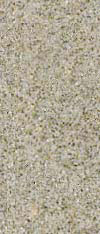|
 he
ocean harbors a mystery. Millions of tiny creatures invisible to
the human eye thrive throughout the sea. Their function is unknown,
because they cannot live outside of their native environment. And
they are anonymous, because they have managed to elude capture by
scientists. he
ocean harbors a mystery. Millions of tiny creatures invisible to
the human eye thrive throughout the sea. Their function is unknown,
because they cannot live outside of their native environment. And
they are anonymous, because they have managed to elude capture by
scientists.
The obscure organisms are marine bacteria. These little life forms
are thought to make up 70 percent of the ocean’s living matter,
or biomass. Microbes “occupy a peculiar place in the human
view of life,” wrote Norman Pace, a biologist at the University
of Colorado at Boulder, in Science magazine. Unless people
are directly affected by microbes, as with disease, humans don’t
pay attention to them. Yet all life on Earth greatly depends on
the minuscule beings, which live in almost every known environment.
Heat-loving bacteria flourish in boiling hot springs, E. coli
bacteria live in animal intestines to help with food digestion,
and radiation-resistant bacteria thrive in toxic dumps, converting
hazardous materials into benign compounds.
Frustrated scientists know that marine bacteria exist, because they
can see the organisms under a microscope. But when they try to grow
the tiny life forms in the lab for study, the microbes die. So how
can researchers catch and keep these elusive creatures long enough
to find out what they are doing? This is a question that Ed DeLong,
a biologist at the Monterey Bay Aquarium Research Institute (MBARI)
in central California, has pondered for most of his scientific career.
DeLong uses a simple technique. He singles out one type of ocean
microbe from a pool of water and decodes pieces of the bacteria’s
genetic code. In this way, he is meticulously solving the puzzle
of what specific micro-organisms are doing in the ocean, without
growing the bugs in the lab. “I first got the idea from my
old mentor Norm Pace, who said that you can start to identify organisms
even if you can’t grow them,” he says. Now, after years
of persistence, he has broken through a barrier. DeLong found that
like plants, a large percentage of marine bacteria use sunlight
to make energy. This discovery amazed the fields of oceanography
and biology, because no one guessed that so many ocean microbes
took advantage of the sun’s abundant gift of light.
These photosynthetic bacteria share a common trail with all cells.
Ribosomal RNA (rRNA) genes are the code for pieces of a giant molecule
called the ribosome. The ribosome is a protein-making factory found
in all cells, from bacteria to humans.  It
works like a molecular assembly line, forging chains of proteins
from the links in the cell. And each rRNA molecule is essential
for its function. If the assembly line stopped, the cells would
die, because proteins crucial to survival would not be made. It
works like a molecular assembly line, forging chains of proteins
from the links in the cell. And each rRNA molecule is essential
for its function. If the assembly line stopped, the cells would
die, because proteins crucial to survival would not be made.
Little changes over millions of years have made rRNA genes a useful
evolutionary marker. “All forms of life on earth have ribosomes,
all ribosomes have the same ancestor, so you can compare ribosomal
RNA genes,” DeLong says. Because of this conservation, researchers
have used rRNA genes for decades to catalogue the Earth’s organisms
on an evolutionary tree call the “tree of life.”
Recently developed technologies make decoding the entire genetic
code – the genome – of an organism a snap for scientists.
DeLong doesn’t require a live organism to get its genes’
sequences; all he needs is the DNA, or genetic material. Using a
machine that unscrambles the genetic code, he finds the rRNA genes.
Each organism’s rRNA genes vary slightly, but the overall sequence
is retained. After comparing a new microbe’s rRNA genes with
known ones, DeLong puts the organism on the tree of life.“There
is a database of organisms that we can grow in the lab that are
the backbone of the tree, a map,” he says. “rRNA genes
are like a barcode, an identifier.”
Eight years ago, this technique helped him find that archaea, an
ancient cousin of bacteria, are more abundant in the ocean waters
than once thought. “DeLong’s discovery of the archaea
in the ocean is a major contribution, it showed that there is this
really divergent group that we didn’t know were so widespread,”
says Jonathan Zehr, a microbial ecologist at the University of California
Santa Cruz. Microbiologists originally thought archaea were restricted
to extreme environments like thermal vents on the ocean floor. DeLong
showed that the organisms make up more than 20 percent of the cells
found in the ocean.
Merely investigating the abundance of organisms in the ocean wasn’t
enough for DeLong. He wanted to know what the microbes were doing.
Indeed, to imagine him resting on his laurels after a big discovery
is like telling a puppy not to be curious.
So DeLong and his post-doctoral fellow Oded Beja embarked on a treasure
hunt for clues in the mystery of ocean microbes. DeLong knew that
he could figure out which bacteria he was looking at by their rRNA
barcode, and he knew that genes are commonly arrayed along DNA strands
in rows. So why not walk along the DNA strand and find out what
other genes are next to the rRNA identifier? Maybe one of those
new genes would lend insight into what some of the elusive bacteria
were doing in the water.
DeLong and Beja’s first goal was to collect large quantities
of marine bacteria, an easy task at MBARI. Perched at the edge of
the ocean overlooking the Monterey Bay in the small town of Moss
Landing, MBARI is a marine microbiologist’s heaven. Two large
boats, called the Point Lobos and the Western Flyer, carry researchers
out to the open ocean to collect samples on daily and weekly excursions.
“The access to the ocean is unique at MBARI,” says DeLong.
“In a couple of hours’ time, you are into very deep water.”
Ocean water samples contain millions of different kinds of bacteria.
Beja and DeLong had to pass more than 1000 liters of water through
a filtering apparatus to get a representative sample for study.
“The filtration takes time,” Beja says, who has made many
collections in Monterey, Hawaii, and Antarctica. The water pumps
at a rate of two liters per minute, so it can take anywhere from
two to ten hours to get enoughbugs for the studies. “It’s
actually quite boring, and we eat a lot of ice cream while doing
it,” he says.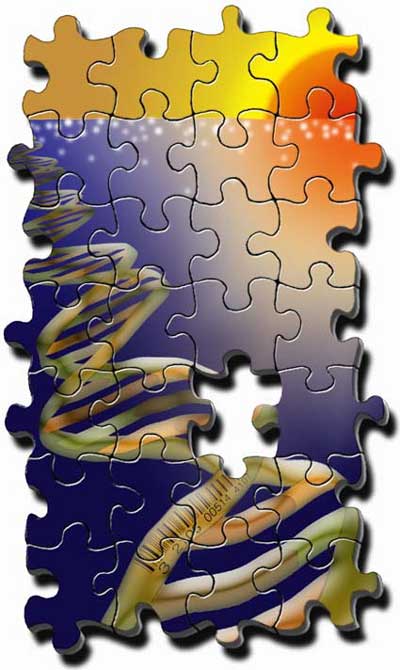
Once the collection process was finished, Beja and DeLong took the
samples back to MBARI. There, they gently removed the bacterial
cell walls and opened up the organisms to extract the sticky, string-like
genetic material. They used careful techniques to keep the strands
long and intact. DNA is extremely fragile, and harsh treatment could
easily result in it breaking apart like a wet piece of spaghetti
pulled from both ends.
“When
we first started we didn’t know what to look for,” Beja
said. Indeed, the two researchers were flying blind, but in a short
time they struck gold. From the DNA purified from the ocean samples
they found a large piece containing the rRNA barcode, and walked
along the rest of the strand looking for other genes. Each gene
has distinct beginning and end points that are easy to spot. When
they came to the first gene, they ran it through the database. Lo
and behold, it was one that had never before been found in bacteria.
And they found it in the first batch collected from the Monterey
Bay. “We were lucky,” DeLong says.
The gene makes a protein called rhodopsin. When exposed to light,
this molecule is activated. DeLong and Beja called their new discovery
proteorhodopsin. It is the first light-sensitive molecule found
associated with bacteria. Because proteorhodopsin needs sunlight
to function, the finding is strong evidence that a large number
of marine microbes use a form of photosynthesis to survive. This
is a process previously only known to occur in plants and some archaea,
but very rarely in bacteria. “Light for this (photosynthesis)
is all over the ocean,” DeLong says.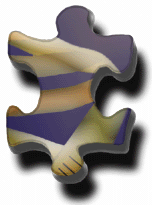
The bacteria containing proteorhodopsin are called SAR86 on the
tree of life. In prior work, DeLong showed that Sar86 are widespread
throughout the surface waters of the ocean. The abundance of the
bacteria suggests that light-sensing energy generation is happening
throughout the ocean waters in a big way.
An important ingredient in the eyes of mammals, rhodopsin works
in the only light-sensitive step in vision. When light shines on
mammalian rhodopsin, it binds to a molecule called retinal to induce
the vision process. Archaea also have a rhodopsin molecule, but
with an added twist. Its protein both binds retinal and works to
pump protons (the positively charged components of an atom’s
nucleus) out of the cell to generate energy.
The discovery of proteorhodopsin was ground-breaking work. But DeLong
remained unsatisfied, because he still could not grow the microbe
that produced the new molecule. He was anxious to get the proteorhodopsin
to work in E. coli, a bacteria easily grown in the lab. If
it functioned in E. coli, the result would teach DeLong more
about how the molecule worked. Of course, he still would not know
if the light-sensing molecule was active in the wild. But the experiment
would answer the question of whether proteorhodopsin turned on in
response to light.
There was one potential problem. Lab strains of bacteria like E.
coli often cannot survive the extreme surroundings where some
marine microbes live. Like a fish pulled out of the sea and plopped
onto land, taking a molecule out of a sensitive marine microbe and
popping it into the mild conditions of the laboratory may kill it.
If, however, the same fish is pulled out of the ocean and put it
into a sale water tank, it will often live. It was possible that
the new bacteria rhodopsin molecule would not work in the classic
laboratory setting, and needed special treatment like the fish.
If that were the case, it would bring DeLong back where he started,
trying to cultivate bacteria that refused to live outside of the
ocean.
Beja used molecular tricks to pop the rhodopsin gene into E.
coli. Once the gene was in the bacteria, he added retinal to
the bugs. Retinal is tiny enough for bacteria to suck through their
membranes. Once the retinal was inside the bacteria, Beja shined
light on the microbes. To his joy, the E. coli turned red,
indicating that the rhodopsin molecule was binding to the retinal.
Beja then tested whether the rhodopsin was acting like a pump by
measuring the number of protons pumped out of the cell. Amazingly,
protons were pumped out, and he could measure the energy
being generated. “This was surprising, because no one had ever
done it, we made it pump!” DeLong says. Suddenly, DeLong
had a major accomplishment on his plate. He and Beja had single
handedly found a new function for ocean bacteria and had replicated
that function in the laboratory.
Their findings were published in the September 15, 2000 issue of
Science. The subsequent media frenzy surrounding the publication
included news reports appearing in Discover, Scientific
American, New Scientist and other magazines and newspapers.
Soon after he published the article, DeLong submitted a patent application
for the bacteria rhodopsin gene. “It will be very handy for
nanotechnology applications,” he says. The field of nanotechnology
is based on using tiny molecules for research and medicine. The
ability to manipulate the new bacteria rhodopsin in the laboratory
makes it an ideal candidate for use in biotechnology. One possible
application is to use the pumping apparatus to generate energy in
E. coli. The bacteria would use the extra energy to make
large amounts of proteins. Biotechnology companies often spend a
lot of time and money making proteins when manufacturing drugs.
The new mechanism could make the process much more efficient. “This
opens many interesting doors that haven’t been opened very
wide in microbiology,” DeLong says.
Along with interest from biotechnology came an offer of collaboration
from The Institute for Genomic Research (TIGR) in Rockville, Maryland.
The non-profit institute is lending its hand as a big genome facility
to begin massive sequencing efforts on other ocean microbes that
refuse to grow outside of the sea. “Ed’s recent paper
is one of the greatest contributions to environmental biology,”
says microbiologist Jonathan Eisen, one of DeLong’s collaborators
at TIGR. Eisen is working with DeLong because he has also always
been interested in the mystery of microbes that refuse to grow in
the lab. “Three-fourths of the organisms on the evolutionary
tree are bacteria, and if 99 percent are uncultured, then we know
very little about the world,” he says. 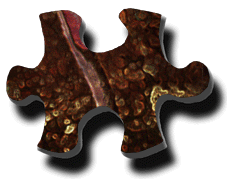
TIGR researchers want to find new microbes to help deal with people’s
increasing antibiotic resistance problems. Each year, billions of
dollars are spent on experiments trying to generate new antibiotics.
But the motherlode may be outside of the laboratory. Microbes have
been fighting each other for millions of years. During this bacterial
warfare, individual bacteria are creating antibiotics against its
enemy microbes. Scientists hope to reach into this virtual medicine
cabinet and identify new antibiotics using genomics. “It does
not mean that the work being done in the lab isn’t very important,
but this method just speeds up the process,” Eisen says.
The antibiotic dilemma is being tackled by scientist investigating
another related mystery. Huge pools of un-named bacteria also live
in the soil. So Eisen and TIGR are working with soil microbiologists
to find new microbes in the Earth’s second greatest resource,
land. “We are barely scratching the surface of knowing what
makes up the biosphere,” says Robert Goodman, an environmental
microbiologist at the University of Wisconsin at Madison. 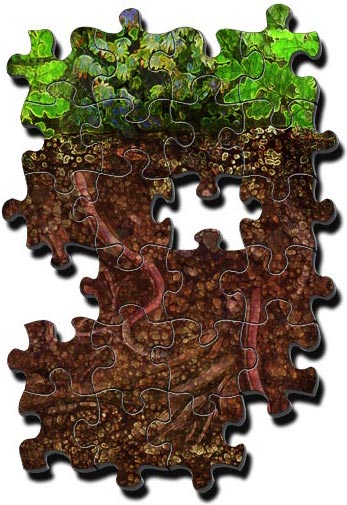 Goodman
is on a quest for elusive soil microbes, with the intention of unearthing
new antibiotics. Goodman
is on a quest for elusive soil microbes, with the intention of unearthing
new antibiotics.
The “germ” of the idea formed in 1996, Goodman says. His
fascination stems from early work by a Norwegian microbiologist
named Torsvic who calculated and hypothesized the exact number of
bacterial genomes on Earth. “My sense of that work, and soil
microbiology, is that there were a lot of microbes about which nothing
was known,” Goodman says.
Goodman has found, using techniques similar to DeLong’s, a
number of molecules that kill microbes. The work is still in preliminary
stages, but it looks promising. Goodman’s approach is slightly
different from DeLong’s because he is looking for gene families
rather than single genes. Most known antibiotic-producing microbes
have antibiotic genes clustered next to each other on the DNA, like
a string of little boxcars. When he finds a cluster of related genes,
then he knows that he’s hit a pay dirt.
We are almost at the dawn of understanding microbiology in the global
sense, Goodman says. DeLong’s work proved that genomics can
pry open locked doors. But skeptics worry about relying too heavily
on genomics, because a gene’s identity doesn’t reveal
much about its function. For instance, a gene could be present in
an organism, but never turned on in the environment. There are many
examples of unused genes in humans, yeasts, and other animals. 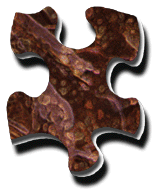
Goodman says that the people who challenge the use of genomics are
forgetting “that whether a forest is made up entirely of oaks
or pine trees tells you a lot about the forests.” So if a gene
is present, it may tell researchers something about evolution of
the organism, or give clues to why the microbe lives in its environment.
There will always be some who are unsatisfied until they can literally
hold the organism in their hand, but the power of genomics is teaching
scientists a great deal about microbes that refuse to be held.
For his part, DeLong doesn’t believe that his discovery is
the answer to everything. “We’ve still got a lot to learn,”
he says. Indeed, DeLong and Beja have now embarked upon a new journey.
They want to get their rhodopsin to work in the ocean, to prove
that the gene is turned on in the microbe’s natural environment.
“My
real goal is to continue to learn about the ocean,” DeLong
says. He remains committed to the question as to why many of the
microorganisms in the ocean refuse to be grown in the laboratory.
“Cultivation is one of the fundamental basics of microbiology,”
he says. The age-old theories state that a scientist must be able
to take an organism out of its natural environment, culture it in
the lab, and then put it back in its original space to truly understand
its function. It seems that DeLong will not rest until he can fulfill
the first of those postulates with his mystery ocean microbes. He
has been thinking of ways to do this, like growing the bacteria
under blue light, a more natural environment for sea-faring creatures.
But his current successes have also motivated him to continue with
genomics.
Wherever his next voyage searching the ocean waters for mysterious
microbes takes him, DeLong has definitely found his home at MBARI.
Sitting in his chair facing a panoramic view of Monterey Bay, he
smiles and says, “Yes, this is where I think large thoughts
about little things.”
|




















